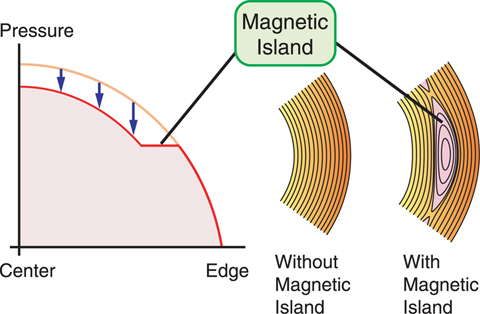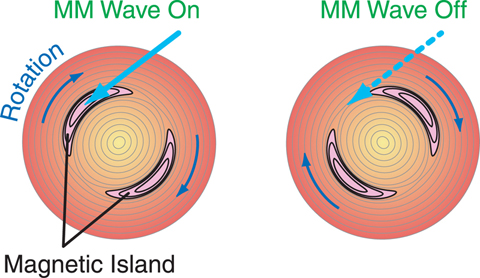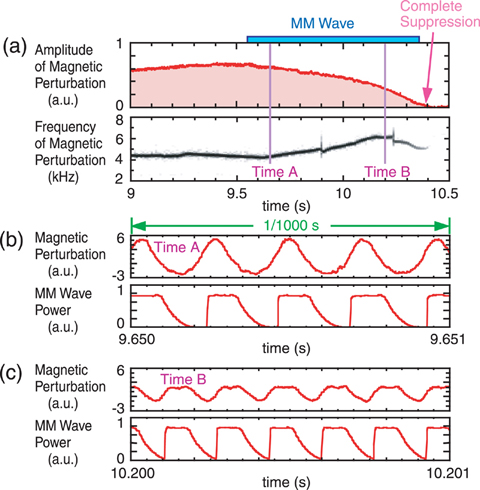
Fig.3-2 Pressure profiles with and without magnetic island

Fig.3-3 Plasma cross section with magnetic islands

Fig.3-4 Demonstration of instability suppression
In a fusion reactor, a high-pressure plasma needs to be sustained for a long time. However, instabilities tend to appear as the plasma pressure increases. Since the instabilities cause loss of heat and particles, and as a result, decrease of the plasma pressure, suppression of the instabilities is necessary to sustain a high-pressure plasma. Neoclassical Tearing Mode (NTM) is an instability which appears in a high-pressure plasma, and thus its suppression in ITER is a high priority. When an NTM does not exist, a plasma is confined by nested magnetic field lines. However, if an NTM appears, a structure called 'magnetic island' is formed in the plasma, and the plasma pressure decreases as shown in Fig.3-2. To suppress the NTM, it is effective to drive current locally in the magnetic island region by injecting millimeter (MM) waves. The method was previously proven effective experimentally in JT-60 using 110GHz MM waves (Wavelength is about 3mm). Current drive limited to the inside of the magnetic island (Fig.3-3) is considered more effective because current drive outside the magnetic island strengthens the NTM. However, experimental verification of this scheme was incomplete due to technical difficulties in modulating high-power MM waves at several kHz and synchronizing them with the rotation of the magnetic island.
To verify the effectiveness of this scheme, we have
(1) upgraded gyrotrons (sources of MM waves) to modulate the output power, which is typically several hundreds to a thousand kW, at the frequency of higher than 5kHz, and
(2) developed a system to generate a trigger signal synchronized with the NTM rotation by processing the magnetic perturbation signal in real time. An example of the synchronized power modulation is shown in Fig.3-4. While the frequency of the NTM rotation is about 4kHz at time A, it gradually increases to about 6kHz at time B. Figs.3-4(b) and 3-4(c) show the magnetic perturbations and the injected MM wave at time A and B, respectively. It can be seen that the period and pulse width of the modulated power is properly set according to the change in the rotation frequency. This kind of automatic optimization has never been performed in any other devices, and JT-60 is the first device to succeed in demonstrating it. It has also been clarified that the suppression effect for the modulated case is more than twice effective than that for unmodulated cases. Since NTM suppression by power modulation of a 170GHz MM wave at about 5kHz is planned in ITER, experimental verification of the suppression effect was eagerly anticipated. This result is important because it verifies the scenario for effective suppression of an NTM in ITER.
<Previous: 3 Nuclear Fusion Research and Development | Next: 3-2 >